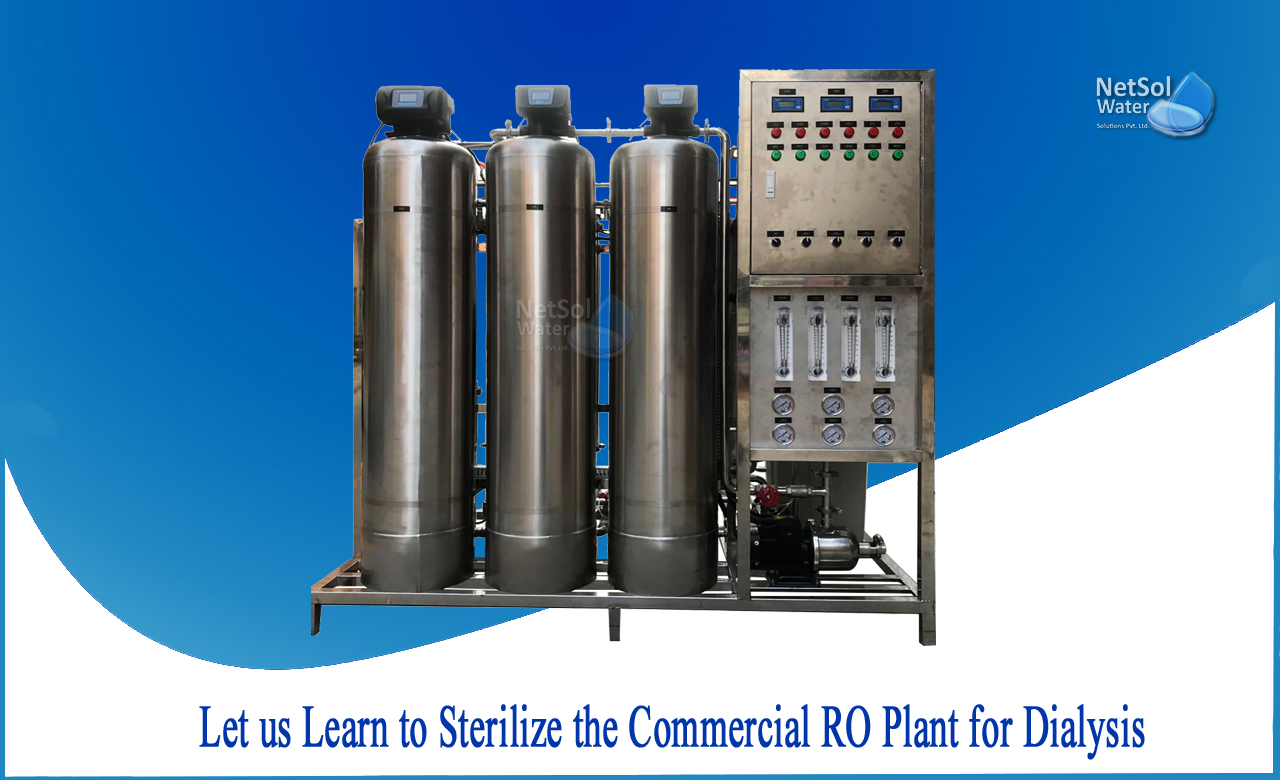How to sterilize the Commercial RO plant for dialysis?
Haemodialysis (HD) has been progressively employed to treat acute renal failure and end-stage renal failure since the early 1960s. Dialysis membranes, dialysis machines, and vascular access have all improved in recent years, making HD a common operation. Despite this, it is still potentially dangerous due to mechanical failures and human mistakes.
HD works by filtering wastes and water from the blood into the dialysate fluid using a semi-permeable membrane within a dialyzer. In HD, water is utilized to make dialysate. If bacteria, endotoxins, metals, mud, silt, or chemicals are present in dialysis water, these pollutants may enter the patient's circulation through the dialyzer membrane and cause sickness or harm.
Because dialysis consumes so much water, even the tiniest quantity of pollutants can be fatal. Some compounds can induce anaemia or pyrogenic responses, while others can accumulate to toxic amounts and cause long-term bodily injury, while others are immediately deadly and can cause death. Normal people are exposed to these chemicals through their drinking water, but a healthy kidney is capable of removing them. Patients with renal insufficiency do not have this capacity. It's paradoxical that the same dialysis that saves lives may also expose people to potentially harmful toxins.
Dialysis water must be properly treated with a water treatment system, which consists of a succession of devices, each of which eliminates certain impurities, in order to be safe for patients. With the introduction of extremely permeable dialysis membranes in high-flux and high-efficiency dialysis, dialyzer reuse and reprocessing, and bicarbonate dialysate, concerns about the safety of dialysis water have been reignited. Fortunately, innovations in water purification technology have kept pace with advancements in dialysis methods.
System disinfection
To avoid biofilm formation, it is critical to clean and disinfect the whole dialysate flow channel inside the delivery system on a regular basis. Heat or chemical sterilants can be used to disinfect (aqueous formaldehyde, peracetic acid or sodium hypochlorite).
There is a risk of formaldehyde entering the dialyzer membrane into blood if the delivery system is not thoroughly cleaned before the dialysis mode is started. Peracetic acid sterilisation is becoming more common these days since it eliminates most of the hazardous effects of formaldehyde while also being more ecologically friendly because it eventually breaks down to acetic acid and water. Heat disinfection of the water flow channel with hot water between 85 and 90 degrees Celsius is an appealing, but more expensive, option that avoids the dangers associated with chemical disinfectants.
Conclusion
RO generates water that is typically safe for dialysis, depending on the quality of the source water; alternatively, a deionizer may be required to polish the RO product water. The performance of RO devices is monitored by measuring the conductivity of the feed and product water and determining the percentage of rejection from these readings. The RO membrane must be cleaned when the percentage of rejection falls below acceptable levels in order to restore its efficacy membranes.
Membranes are also vulnerable to chlorine and chloramines, as well as high pH and bacterial deterioration. As a result, proper feed water pre-treatment is required to safeguard the RO membranes and can extend its life by several years.



